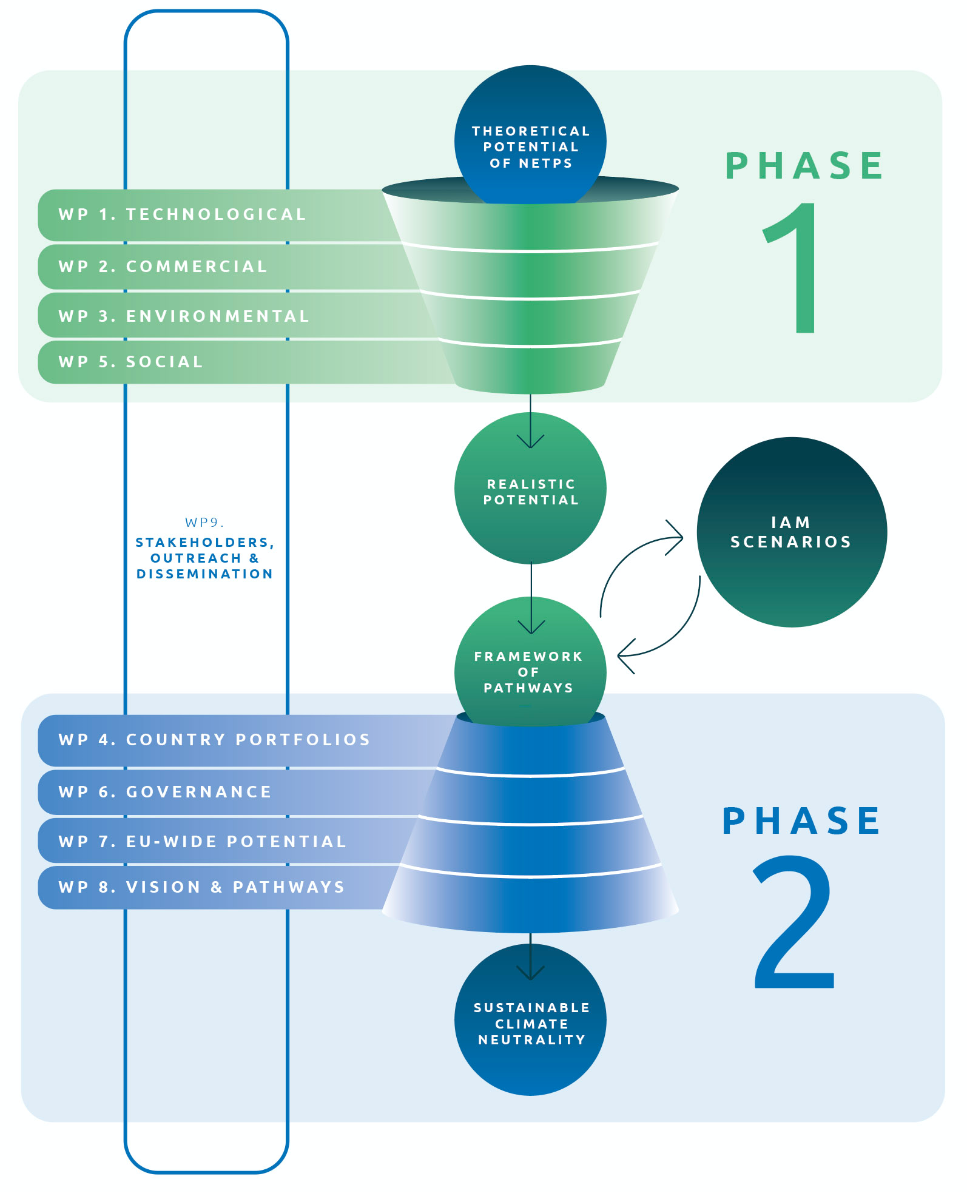Activities and Impacts

All the activities of NEGEM are interconnected and the workplan is organized in two phases:
phase 1
Assessment of impacts and potential
In this phase the project screens NETPs against several criteria:
- technological parameters
- planetary and regional boundaries costs
- opportunities and risks social acceptance
- political feasibility
phase 2
Framework for development pathways
The results of the assessment are used to create scalable pathways for the development of NETPs that contribute to achieving climate neutrality.

Work Packages
The scientific and technical work is organized in nine packages, supplemented by project management and coordination.
Techno-economic assessment of NETPs based on cost, effectiveness, technological readiness, and CO2 reduction potential. Quantification of sustainability indicators such as land, water, energy, and carbon footprints of different NETPs.
Quantification of the potential value and option value of negative emissions offsetting residual emissions. Testing market-based implementation opportunities in three case studies: power generation with wood pellets, reforestation/afforestation of arid areas, combined heat and power with CCS using secondary biomass sources.
Multi-dimensional life cycle assessment of NETPs impacts on planetary boundaries (land, subsurface, biodiversity, human safety and ecosystems) and resource flows (food security, freshwater and oceans, biomass, metals and minerals). Spatially explicit representation of the sustainable theoretical potential of NETPs.
Integrated approach for the deployment of country-specific portfolios of NETPs considering bio-geophysical constraints. Development of a capacity expansion tool for the cost-optimal deployment of a portfolio of NETPs.
Analysis of the public perceptions of costs, risks, and benefits of NETPs considering social license to operate (SLO), stakeholder views, business case.
Analysis of governance approaches and structures; elaboration of definitions and terminology; practical recommendations on policies and governance structures to manage a responsible deployment of NETPs in line with Europe’s climate and sustainable development targets.
Quantitative analysis of the effectiveness, potential and impacts of deploying NETPs in the EU. Existing burden-sharing approaches will be used to distribute the total EU carbon removal burden amongst the individual countries.
Development of an analytical framework for how to create, select and promote NETPs-including pathways to reach the Paris Agreement. Creation of open access NEGEM datasets and feeding into relevant international databases, to ensure the best use of new data on NETPs.
Dissemination of project results and activities to the scientific community, outreach to EU policymaker and to international stakeholders and media. Measures to promote the exploitation of the results at scientific, commercial and policy level.

